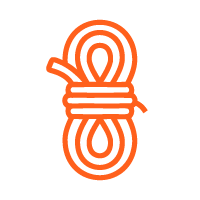Attached Rope Coiling
Start from where the rope is attached to the cleat. Leave enough slack to form the final loop. Make the coil with alternate turns over and under the rope. Pull a twisted loop of the slack through the coil. Hang the loop on the cleat.
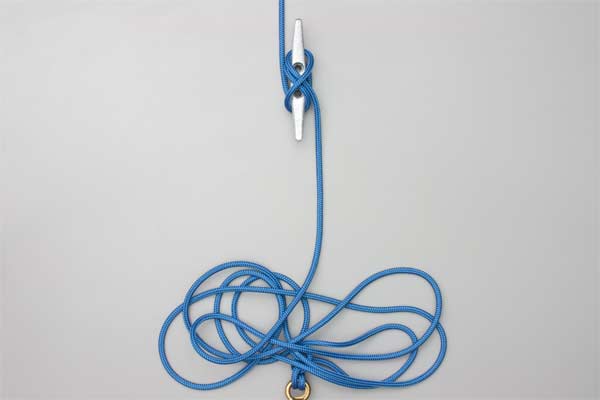
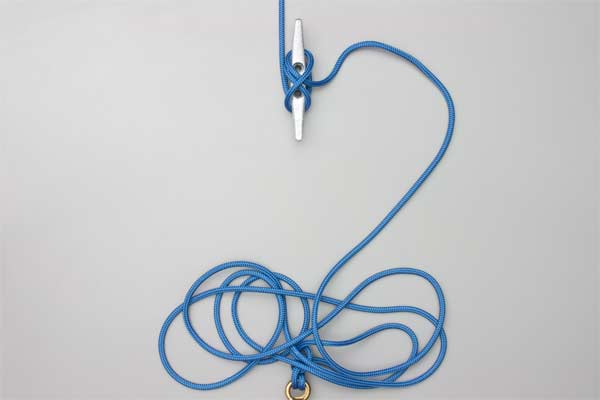
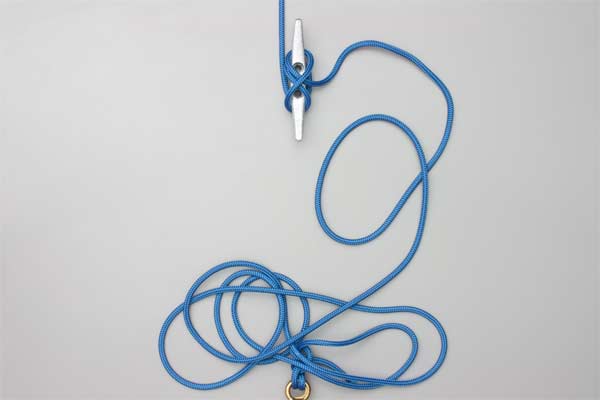
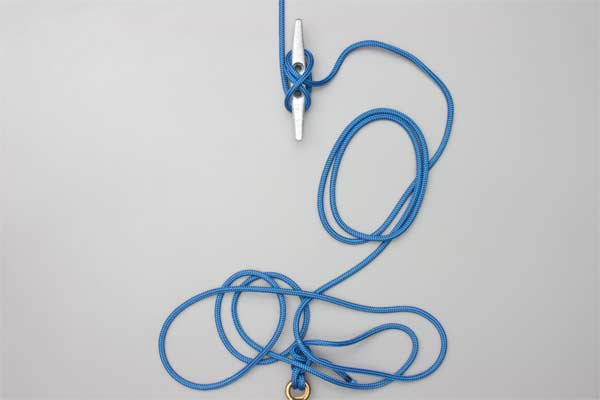

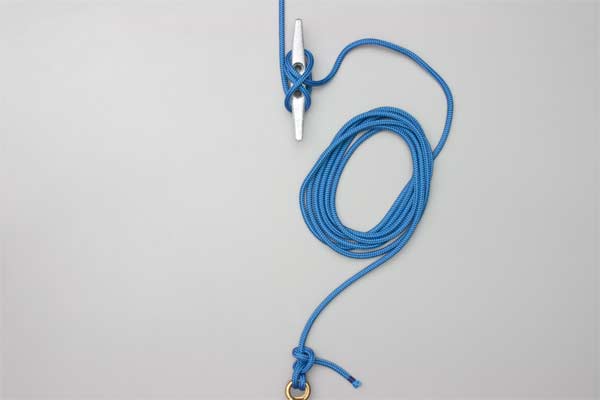
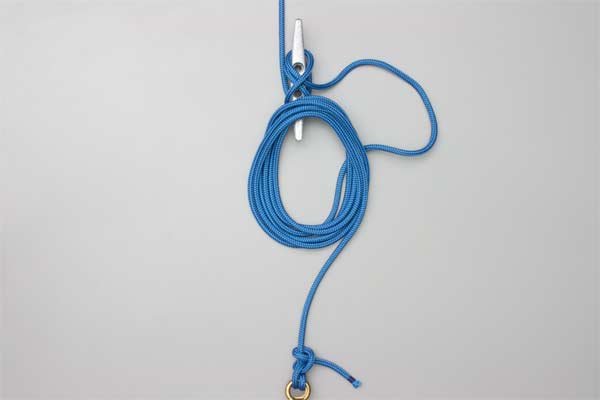
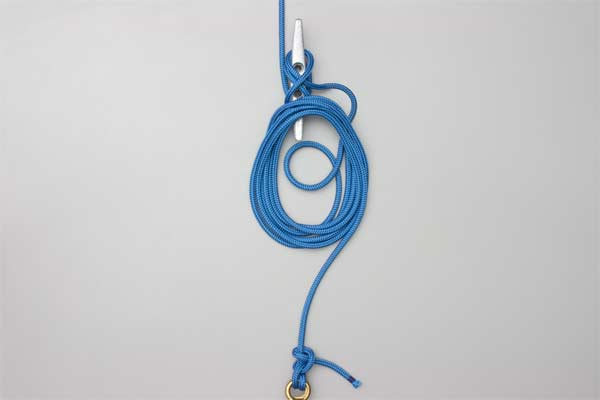
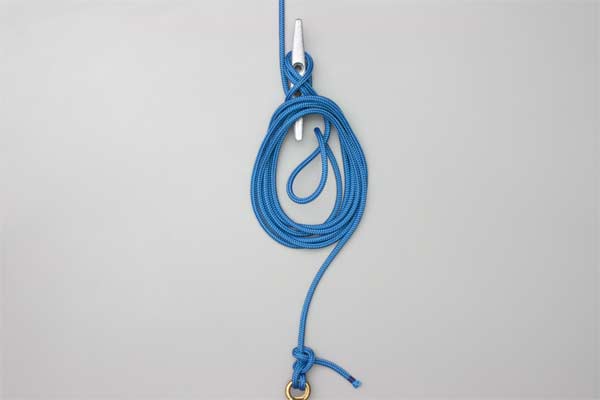
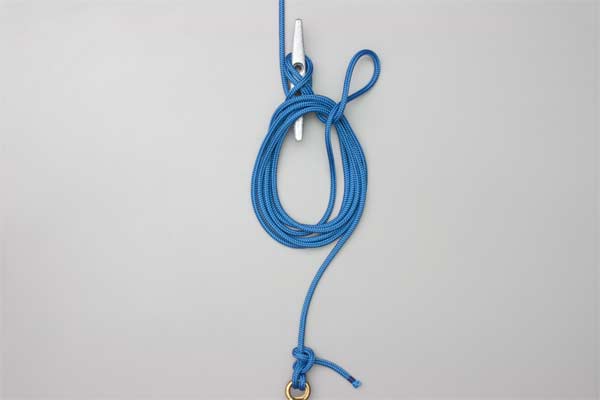

Coiling Attached Rope Details
Uses: An attached rope, e.g., a halyard, can be hung from the cleat or belaying pin (ABOK # 3088, p 513) using a twisted bight. The bight supporting the coil can be unhooked very quickly to allow the coil to be rapidly released: when the coil is laid on the deck the rope should run freely without kinks or tangles.
Never Wrap the Coil with the Tail End: Tension on the halyard can tighten the turns in the coil around the bight and can make releasing the bight almost impossible.
Variations: The animation demonstrates a round coil being made where the tail is secured to the foot of the mast. The coil is started from the cleat. Alternating turns are laid over (Frame 3) and under (Frame 4) to avoid twists. There are several options.
The Figure 8 CoilThe Figure 8 Coil- Figure 8 Coil: A Figure 8 coil can be used to avoid introducing twists and can be secured in the same way.
- Nothing to Hang the Coil On: If there is no space on the cleat to hang the coil on, the coil can be finished like the Unattached Coil: the halyard is used to wrap the coil and then a bight of it is passed over the top of the coil. This method takes slightly longer to release the coil.
- More Secure Loop: If the slack is left long enough, the twisted loop can be passed behind the tight halyard before being hooked on the cleat. In heavy weather, the halyard is then more likely to stay securely coiled but can still be released very rapidly.
- Untwisted Wraps: As an alternative to hanging the coil on a twisted loop, a larger bight can be left and then wrapped two or three times through the coil before being hooked on to the cleat. These turns bind the coil and may hold it more securely.

